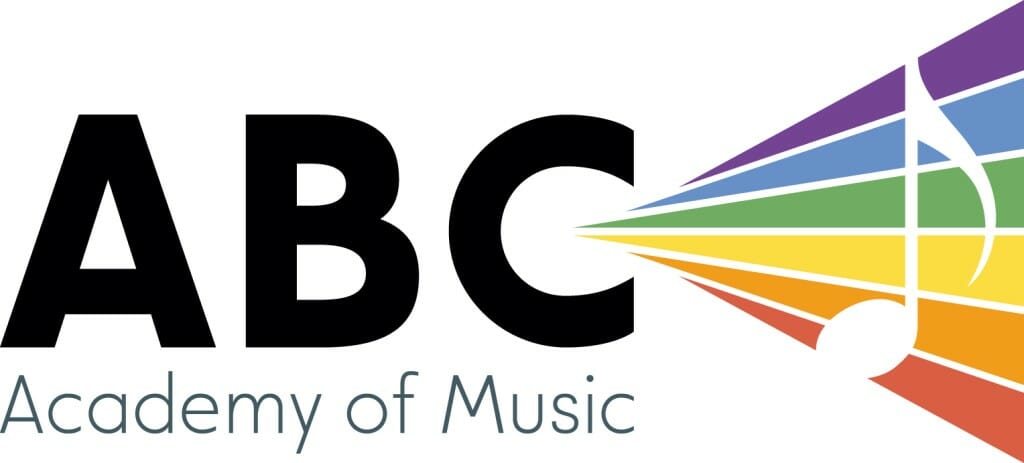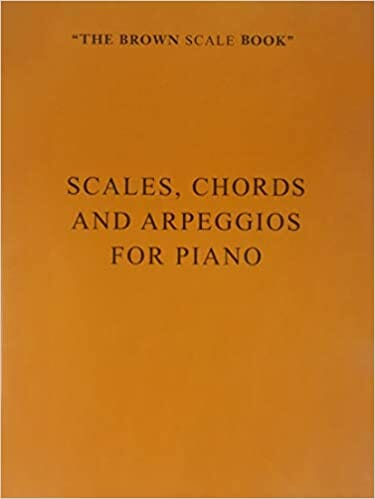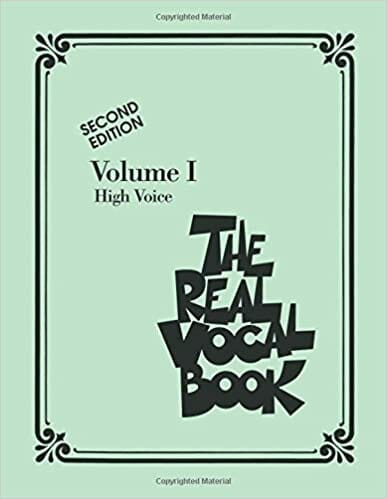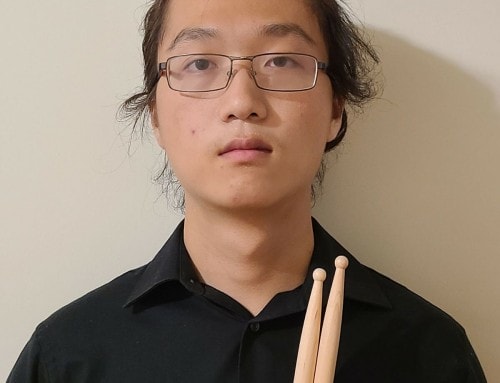B.Mus (Humber) in-progress
Adina is a singer-songwriter based in Toronto completing her Bachelor of Music degree at Humber College in vocal performance. Trained classically in piano since the age of 5, she has branched out into pop and jazz as well.
Vocally she is well-versed in many genres including jazz (she loves to scat!), musical theatre, pop, singer-songwriter, country, R&B, and acappella. She has 7 years of choir experience in both chamber and jazz styles. Adina has been writing and singing original songs since the age of 12, and has two singles as well as an EP out on all platforms under the artist name Adina V.
She has performed all across southern Ontario singing with the Toronto All-Star Big Band, as well as at various venues in the GTA with her own jazz duos and trios. As a member of the Cawthra Park Chamber Choir she performed at Roy Thompson Hall with the TSO for two years in a row. At Humber College she is part of the Vocal Jazz Ensemble led by Lisa Martinelli; this group performs advanced repertoire at events like the Ontario Vocal Jazz Festival.
Adina has been teaching music for the past 7 years and loves helping students meet their personal goals while fostering a love of music that lasts forever!
Get to know Adina…Beyond the Bio!
Hobbies: reading, puzzles, video games, painting
Musical Influences: Ella Fitzgerald, Nancy Wilson, Doris Day, Joni Mitchell, Taylor Swift, John Mayer
Favourite Food: Pad Thai
Least favourite food: eggplant
Favourite music: Indie rock and folk
Favourite song: All I Need by Jacob Collier ft. Mahalia & Ty Dolla $ign
Favourite movie: Matilda
Favourite movie music: The Pirates of the Caribbean theme
Favourite Musical: Dear Evan Hansen or The Last Five Years
Best Quote from your teacher: “It’s an amazing and wonderful experience to be able to be intentional about, in the moment, making music”
Favourite Quote: “Even as we are, we are becoming”
Favourite Book: The Girl With the Dragon Tattoo trilogy – Stieg Larsson
Best thing about teaching at ABC: Sharing and fostering a love of music with students of all ages
Latest Homework from Adina
Is Adina Your Teacher?
Sign up now to get your weekly assignments delivered, and never lose your homework sheet again!
Sunday, February 21, 2021
Emet
Recommended minutes to practice: 15-20 minutes a day
What to practice: D major triads (hands separately, solid and broken), Hunting Song (full form), and Piano Man (hands separately until bar 34).
How to practice it most effectively: For the triads keep your hands fairly high into the keys for every inversion fo you can easily reach the F#. Remember that RH uses finger 2 in first inversion, and LH uses finger 2 in second inversion. For Hunting Song, make sure to count and feel the pulse during longer holds. LH eighth notes in the first half of the piece should be all connected. Make sure to use the labeled finger numbers on the “hunting we will go” phrases so legato playing is possible. As well as playing through the full form, try to play with dynamics – the bigger the contrast between your f and p sections, the better! For Piano Man, isolate RH in bars 7-8 and 25-26 a few times and really ground through your finger 5 – the D should hold all the way through the bar. Please note the slight note change in bars 16-17 for RH. If you’d like you can try playing the very first line hands together, slowly.
Nathalia
Recommended minutes to practice: 10-15 minutes a day
What to practice: G major scale (hands together), Bye, Bye Love (verse hands together, chorus and endings hands separately).
How to practice it most effectively: You may try gradually speeding up your scale; just make sure the notes remain all even. For Bye, Bye Love, please isolate bars 9-12 (hands together) a few times, paying extra attention to the finger numbers and notes (RH is stepping up with fingers 2-3-4-5 both times). When reading intervals, always start with your top note and place finger 5 on it before figuring out the bottom note. The 2nd ending is new, so go slow and really watch the direction the melody moves in. If you feel comfortable you may try the first few bars of the chorus hands together!
Kollel
Recommended minutes to practice: 20-30 minutes a day
What to practice: B major scale (2 octaves hands together), Canon (lines 1-4 hands together, lines 5-6 hands separately), Prelude (LH full song, RH first couple of lines).
How to practice it most effectively: For our scale, RH’s fingering is as usual but LH must start on 4. For Canon, see if in the first 2 lines you can slow down your eighth notes within a chord, giving you time to look ahead and prep for the next one – this will help eliminate the pauses between each chord. As you feel more comfortable, try this with lines 3-4 as well. In lines 5-6 we crossed out some of RH’s lower notes, but kept most of the 6ths and 3rds. Go slowly and follow our labelled fingering – where there are no finger labels just use whatever’s most comfortable even if you have to lift (playing with pedal will help mask this). For Prelude, LH is mainly going up and down the 5 note scale, but watch out for the few times the pattern changes! The trickiest part of this piece is noticing all the accidentals (Bb and Eb are in our key signature, but there are also other flats and naturals as well) as well as all the finger numbers (because there are so many eighth notes in a row these fingerings are very important). RH observe the staccatos even when sight reading as it’ll instil the good habit early – if you have to go slower to make this happen then please do!
Tuesday, February 23, 2021
Gianna
Recommended minutes to practice: 10-15 minutes a day
What to practice: C major full scale vocal warmup (from middle C up until the next C then back down, singing the letters as you go), Life is an Adventure chorus – putting notes to the melody. You can also experiment with choosing some notes for the verse and we will check those next week!
How to practice it most effectively: For your warmup, put one hand on your belly so you can feel yourself getting a full “belly breath” a few times before starting to sing. Don’t worry about scale fingering on the piano, just use your pointer finger to play the notes as you sing the letter names. Be extra careful when coming down since saying our alphabet backwards is trickier than forwards. Even though we are just singing letters names, still be clear with your pronunciation of consonants so we can make that a good habit. For Life is an Adventure, we chose melody notes for the chorus. Remember that 2 of our notes are flats (Eb and Bb), and this means we play the black key that’s just under the white key of that letter name. The starting G is above middle C and it’s the highest note (so all others will be lower). Today we learned that most pop song melodies actually use few notes in many different ways, so there are actually only 5 notes in total here! See if you can use these notes – and maybe some new ones – in the first few lines of your verse for this song.
- “Life is an adventure” x2 the notes are G-G-F-Eb-Eb-F
- “What’s going to happen next?” notes are G-F-Eb-F-F-Eb
- “Life is like walking through the jungle” Bb-Bb-Bb-G-G-F-Eb-F-Eb
- “Life is like climbing a tree” Bb-Bb-Bb-G-F-Eb-F
- “You never know what is going to happen next” Bb-Bb-C-Bb-G–G-F-Eb-F-F-Eb
For next class, please brainstorm 1 or 2 pop songs you might want to sing (I’m thinking artists like Shawn Mendez or Selena Gomez might be a good place to start – just make sure it’s a song you already know).
Ken
Recommended minutes to practice: 15 minutes a day
What to practice: G major scale hands separately, Mr, Haydn’s Theme, My Daydream, The Clock Strikes Thirteen
How to practice it most effectively: Our G major scale has one black key – an F#; fingering stays the exact same as C major. For Mr. Haydn’s Theme, please read the LH notes carefully so you don’t accidentally keep playing when it should be RH by itself! Try as best you can to connect all notes under the slurs. For My Daydream, LH should be holding down dotted half notes for the full 3 counts even while RH moves. Again in this song we should play everything connected. In The Clock Strikes Thirteen, we learned about crescendos and diminuendos – these shapes tell us to gradually increase or decrease the volume we play at. While playing with these dynamics is the main focus of the piece, please don’t forget your rhythms and legatos!
Steve
Recommended minutes to practice: 15 minutes a day
What to Practice: My Daydream, The Elf’s Silver Hammer
How to practice it most effectively: For My Daydream, the last detail to focus on as we play hands together is connecting everything even inbetween the bars. Even though no slur is written over LH’s part for most of the song, it should still all be legato. For The Elf’s Silver Hammer, play the whole piece hands together but with no dynamics. First we want to focus on learning notes and rhythms correctly. Please be extra careful in line two with the difference between eighth notes and quarter notes. Use “1+2+” counting to help you hold quarter notes their full value. 15ma means we play the written note 2 octaves higher.
Gabe
Recommended minutes to practice: 20 minutes a day
What to practice: Suitor’s Song, Theme from Don Giovanni
How to practice it most effectively: Suitor’s Song is our dynamics focused piece. Once you review notes and rhythms (paying extra attention to the dotted quarter – eighth note rhythm that happens many times throughout the piece) please play with a distinct difference between the p, mf, and f sections. For Theme from Don Giovanni, please play bars 16 until the end a few times with RH only, making sure you’re starting with your thumb on G. Afterwards, add LH and still only play these 3 bars a few times. Once that feels comfortable now you are ready to play the whole piece top to bottom!
Isaac
Recommended minutes to practice: 20 minutes a day
What to practice: F major scale (1 octave hands together), Andante in G Minor, Early one Morning
How to practice it most effectively: In our F major scale, finger 3s line up on A and finger 1s also line up on C. For Andante in G Minor, play your eighth notes a little slower so they match the rest of the piece’s speed. Please remember to detach the quarter notes since it’s appropriate to the style (a good place to practice this is in bars 6-7 and 10-11, but in time all quarter notes should be detached). For Early One Morning, please continue to practice hands separately so RH can get more comfortable with the melody. It’s extra important for RH to watch the steps and skips since the melodic pattern changes ever so slightly each line. Follow the written finger numbers carefully – when we have this many eighth notes it will help a lot!
Wednesday, April 28th, 2021
Dvorah
Recommended minutes to practice: 10 minutes a day
What to practice: Ode to Joy, My Invention, Let’s Play Ball
How to practice it most effectively: For Ode to Joy, we decided to do the first 2 lines medium loud (mf), the middle part loud (f), and the last line back to medium loud (mf). In My Invention, the first time through is f, while the repeat is p. Please make sure it’s one tempo (speed) throughout – the loud part should not be faster than the soft part. You have put in lots of practice and are definitely in great shape for Saturday! For the new song Let’s Play Ball, LH has a new note B. Please make sure you’re holding all your half notes full volume.
Diya
Recommended minutes to practice: 15 minutes a day
What to practice: do-re-mi C major scale warmup, Do a Deer (karaoke), Firefly, and start listening to My Favourite Things
How to practice it most effectively: Please continue to sing your do-re-mi scale starting on C as a warmup. After doing it with the piano once, sing up the scale in one breath, then try singing down the scale too! For Do, a Deer, you are ready to sing along with the karaoke – the one we used today is the karaoke cloud version. Use the low melody on the intro/verse part to help you! In Firefly, we put the whole song together this week. Use your sayings to help you if you’re ever unsure of the notes. The new last line starts off with C major broken triads.
Marco
Recommended minutes to practice: 10-15 minutes a day
What to practice: Mexican Jumping Beans, Sailing in the Sun, Haunted Mouse
How to practice it most effectively: Mexican Jumping Beans is our warmup song this week – play it once before your practice sessions. In Sailing in the Sun, please make sure LH is lifting for the rests. You can try to gradually speed it up a little so it feels more energetic! In Haunted Mouse, watch out for RH’s change of skips from C and E to D and F. The last line is a little tricky for RH – really follow along with the melody’s directions. Remember to always do your counting – quarter notes get 1 but half notes get 2!
Oliver
Recommended minutes to practice: 15 minutes a day
What to practice: The Rainbow, Good Morning
How to practice it most effectively: For The Rainbow, please continue playing the whole song hands together. The last line has a few curveballs with the D and A flats. Use your sayings to help you anywhere you are unsure of the notes. B is a LH note that we cannot use sayings for – it is right above the staff. For Good Morning, you can start looking and reading the first line hands together nice and slow – watch out that your bottom note is always G (we never play low F in this song).
Alice
Recommended minutes to practice: 15-20 minutes a day
What to practice: Little Do You Know, Attention, A Joke For You, Football Game
How to practice it most effectively: For Little Do You Know, please continue to sing along with the lyric video. In the 2nd verse (where it’s the boy singing), be careful with the “Little do you know I’m trying to make it better piece by piece” lyric since he goes down lower – try to match where he’s singing. In the choruses, your guide note on piano is E above middle C. It’s helpful to play this while you’re singing, especially in spots where there are two harmonies. Please continue to practice Attention – we will start with this one next week. For piano, we have A Joke For You and Football Game – LH has new notes! We play in C position, which means low C is played with finger 5. From there, find D-E-F-G by looking for steps vs. skips. RH is still playing in its regular C positions (finger 1 on C).
Linda
Recommended minutes to practice: 20 minutes a day
What to practice: Major scales in sharp keys (from G to E, hands separately), New Shoes, Cry Me a River
How to practice it most effectively: For the major scales, we are using the cycle of 5ths, which means starting from C, and each jump of a 5th we add a sharp (so G will have 1 sharp, D will have 2, etc.). When going from one key to the next, we keep the old sharps and add a new one on the 7th degree. The fingering stays the same for all these scales. New Shoes is sounding super solid – next step is to add dynamics and speed it up just a little (try giving yourself the tempo with your metronome on the higher end of the range). For Cry Me a River, work on feeling out the chords with your right hand. We spoke about how minor 7 b5 chords are just a minor triad over the root (this is especially helpful for F#-7b5 and C#-7b5 since these can be translated to A-/F# and E-/F#.
Emet
Recommended minutes to practice: 15 minutes a day
What to practice: Bb major scale, Piano Man
How to practice it most effectively: For the Bb major scale, continue playing it hands separately for one octave. Remember that RH finger 4 plays on Bb and LH finger 4 plays on Eb. For Piano Man, please isolate bars 44 to 47 a few times to practice the crescendo and rit; the C chord in bar 47 is the goal and should be the loudest/most powerful part. Please also spend some time with bars 59-60; RH’s finger switch there will help you smooth this out. Before performing, make sure you take a few deep breaths and prep your hands – trust that your hard work will shine through!
Kollel
Recommended minutes to practice: 20 minutes a day
What to practice: Ab major scale, Canon, Dance of the Dragonflies
How to practice it most effectively: For the Ab major scale, continue to go hands separately for 2 octaves; remember that Rh plays with fingers 2-3 on the group of two, while LH plays with 4-3. For the Canon, just make sure you keep it relatively soft for the first page so you have room to grow dynamically. Consciously tell yourself not to rush in bars 21-28, and remember the note you are moving to is always C# in resolutions like bar 20 and bar 32. You are absolutely recital ready and the hard work on this piece is clear to hear! For Dance of the Dragonflies, continue to play the first 2 sections hands together, paying extra attention to bars 15 and 27’s RH staccatos. Play the last section hands separately for now, but you may put it hands together as the week goes on.
Preferred Books for Adina’s Students
Click to buy them here, and they’ll come right to your house! What could be easier?
Alfred's Basic Piano Library Lesson Book 1A
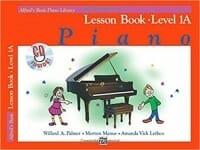
Alfred's Adult Basic All-In-One
Alfred’s Basic Adult All-in-One Course is designed for use with a piano instructor for the beginning student looking for a truly complete piano course. It is a greatly expanded version of Alfred’s Basic Adult Piano Course that will include lesson, theory, and technique in a convenient, “all-in-one” format. This comprehensive course adds such features as isometric hand exercises, finger strengthening drills, and written assignments that reinforce each lesson’s concepts. There is a smooth, logical progression between each lesson, a thorough explanation of chord theory and playing styles, and outstanding extra songs, including folk, classical, and contemporary selections.
The Brown Scale Book
This essential resource includes all major and minor scales, triads, arpeggios, dominant sevenths, and chromatic scales organized by key. A favorite for decades, The Brown Scale Book belongs in every student’s library.
The Real Vocal Book
The Real Vocal Book has many of the selections from Volumes 1 and 2 of the instrumental Real Books, but now with complete lyrics added to the pre-existing melody line. This edition features 300 essential songs arranged for low voice, including: Alfie * All of Me * Autumn Leaves * Bewitched * Bluesette * Don’t Get Around Much Anymore * Fever * Georgia on My Mind * Misty * Moon River * My Funny Valentine * Satin Doll * and more. Looking for a particular song? Check out the Real Book Songfinder here.
